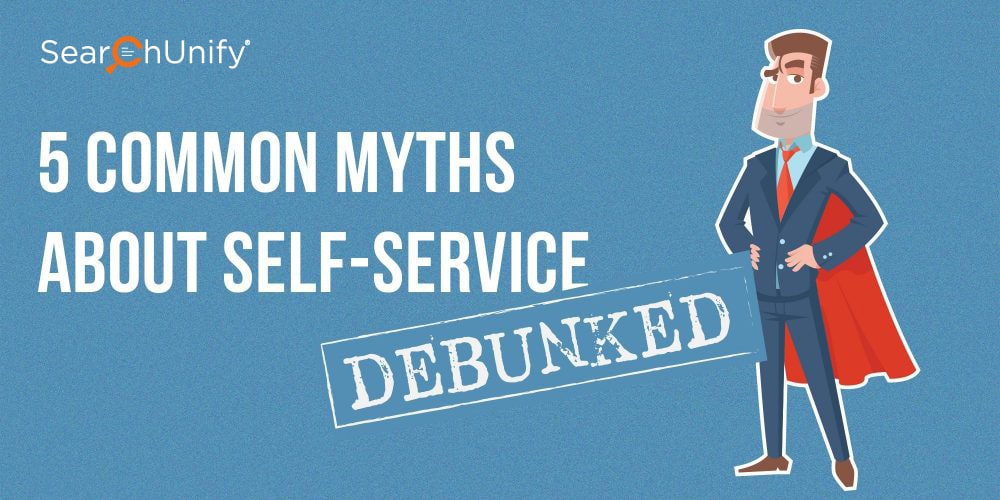

More & more number of support firms are rapidly adopting self-service or the ‘do-it-yourself’ model. 70% of customers now expect a company’s website to include a self-service application. Support folks love it because self-service equals case deflection, which eventually translates into reduced support costs. So, it’s a win-win for customers as well as customer support leaders. As popular a method it is, as many misconceptions or myths are attached to it. In this blog post, we’re debunking common ones.
Myth 1: Self-Service Fits Everywhere
Support managers prefer self-service because it deflects cases and cuts costs. So they try to implement it at every stage and channel thinking customers will fly to it like a flock of hens. That’s not applicable to every customer because individuals vary and so do their choices. There are certain processes – easy ones, which do not necessarily require technical assistance, or much of it – your users would like to do on their own. That is when a self-serving tool gives them a sense of control and empowerment in addition to saving time (which is their utmost concern).
But then there are processes that are complex for a non-technical user and a self-serving tool wouldn’t really do the trick. This is where your customers need the army of support reps you’ve trained.
So, you can’t just implement your self-service strategy at all touchpoints and expect all your customers to love it. You need to check in which situations your self-service tools are a success and where they’re not.
Myth 2: Self-Service Limits Personalization
Customer support sector is all about solving user issues & personalizing their experiences simultaneously. Self-service is perceived as a one-size-fits-all solution. It’s not simply installing a tool that’s going to treat all customers in a similar way. In fact, a self-service strategy promotes the opposite.
Smart support organizations equipped with self-serving tools are able to provide more relevant responses by leveraging past user conversations and displaying role-based results when users type in the search bar.
Myth 3: Self-Service Means ‘Bye Bye Human Agents’
There is no doubt that automation of certain processes frees up human resources, but all those processes are mundane and robotic ones that shouldn’t have been using people in the first place.
Your employees are skilled and trained to work on more complex issues. Hence, all self-service does is lets you tap into the true potential of your peeps. This, in turn, improves employee engagement and work satisfaction. All the more reason to have self-service in place.
Myth 4: Self-Service Is a One-Time Investment
Self-service is considered something that is implemented once and then the rest is left up to it. But folks, it is self-service not self-improvement!
For a good self-strategy or tool to work, it’s immensely important that you analyze after its installation. It’s a must to examine if customers are getting what they want. Self-service tools come with the reports that give you detailed metrics. The number of successful searches, clicks, unsuccessful searches, etc can come in really handy. All these metrics can help you identify content gaps and develop your content strategy accordingly.
Myth 5: Self-Service Implementation Is a Cake-Walk
Self-service is not as easy as it sounds, but it’s also not as difficult as you imagine it. Usually, organizations purchase a self-service tool and install it. They think that the rest will be taken care of by technology.
Even before implementing it, you need to identify how your self-service strategy should be implemented – for what services, products, processes and on what channels your customers would prefer it. If you’re an online shopping platform an FAQ page would be helpful in saving the day. If you’re a product-based IT firm, a community, where users could discuss common issues, would be more productive.
Want to master the art of self-service? Here’s your guide!
It requires a well-thought-out strategy and consistent post-installation checks to make your self-service a resounding success. Read our ultimate guide to mastering self-service for a step-by-step & practical plan for your firm.